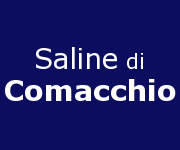Saltworks
The context: the 4 saltworks
The context where the present project takes place is represented by four saltworks of great naturalistic and landscape interest, three out of which are recognized as Wetlands of International Importance by the Ramsar Convention (Cervia, Comacchio and Sečovlje), while the Strunjan saltworks belong to the homonymous Park recognized as Protected Regional Park and Cultural Monument thanks to its architectural and historical peculiarities and to its environmental richness.
The Cervia Saltworks, southern access and station of the Parco Regionale del Delta del Po, are considered an environment of high nature and landscape interest: in 1979 they also became a Nature State Reserve for animal population. Since they are inhabited by rare and protected animal species the saltworks are a point of reference for those visitors who are sensitive to environmental aspects. Moreover, they can boast a very ancient history thanks to the exploitation of the saltworks by the Greek colonists, who founded the city of Ficocle, and the Etruscan people.
The Comacchio Saltworks extend over 500 hectares in the northeastern area of the Valleys. The salt extraction activity was interrupted in 1984, and since that time it became a brackish wetland of remarkable nature value, where for some years also pink flamingos have been stopping. Today, thanks to the EU LIFE Program, the saltworks can still produce salt for didactic-popular purposes. The Project is intended to elaborate a pilot project in order to develop the Red Tower as a tower for birdwatching.
As far as the Slovenian area is concerned it is remarkable that at the beginning of the century the short coastal strip of the Istria region, only 46.6 km long, was covered with saltworks. The most important saltworks were situated in the Piran area: today only the Strunjan Saltworks and those in Sečovlje at the mouth of the river Dragonja still remain. Thanks to the architectural and historical features, as well as to the wide range of plants and animals (more than 270 varieties of sedentary birds are in the area) all the 650 hectares of land at the border of southeastern Slovenia have been declared Protected Regional Park and Cultural Monument. As far as the protection of the environmental heritage and of the ecological balance of the entire gulf is concerned, the Strunjan Nature Reserve is extremely important thanks to its particular geomorphological features, its biotic variety and its continuous extension in the Gulf of Trieste.
Thanks to its rich natural and cultural heritage, the area belonging to the Sečovlje Saltowrks and to the Sezza peninsula was declared Nature Park in 1989 by the Municipality of Piran, which intended to preserve this area as a typical morphological element of the cultural scenery in the Slovenian coast. Within the Park area the saltworks were protected even further and declared Technical and Ethnographic Monument considering their architectural, technical, technological, ethnographic and linguistic significance. The project involves important nature areas characterized by fragile balances which require a particular care as far as their tourist development is concerned. Moreover, they also have a great historical value thanks to the presence of areas where a precious good such as salt is extracted since ancient times.
The naturalistic and cultural aspects make this environment a very important tourist destination with a great potentiality.















